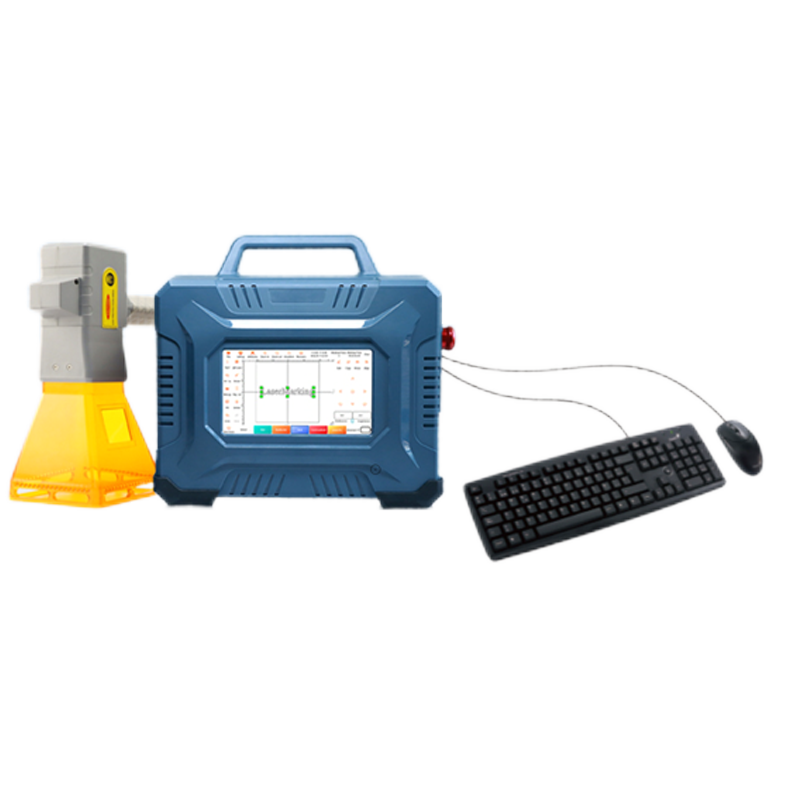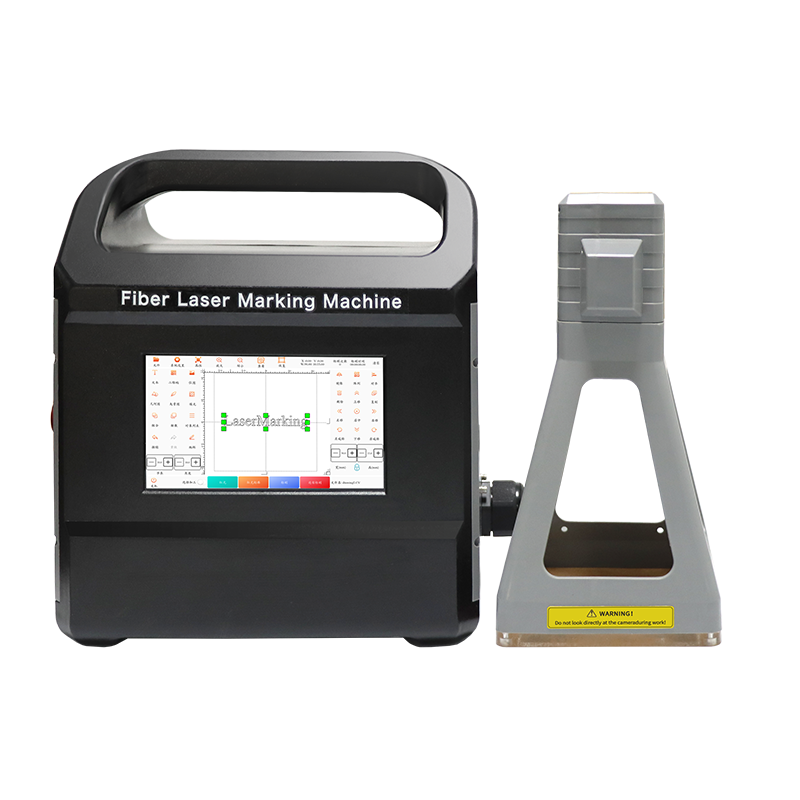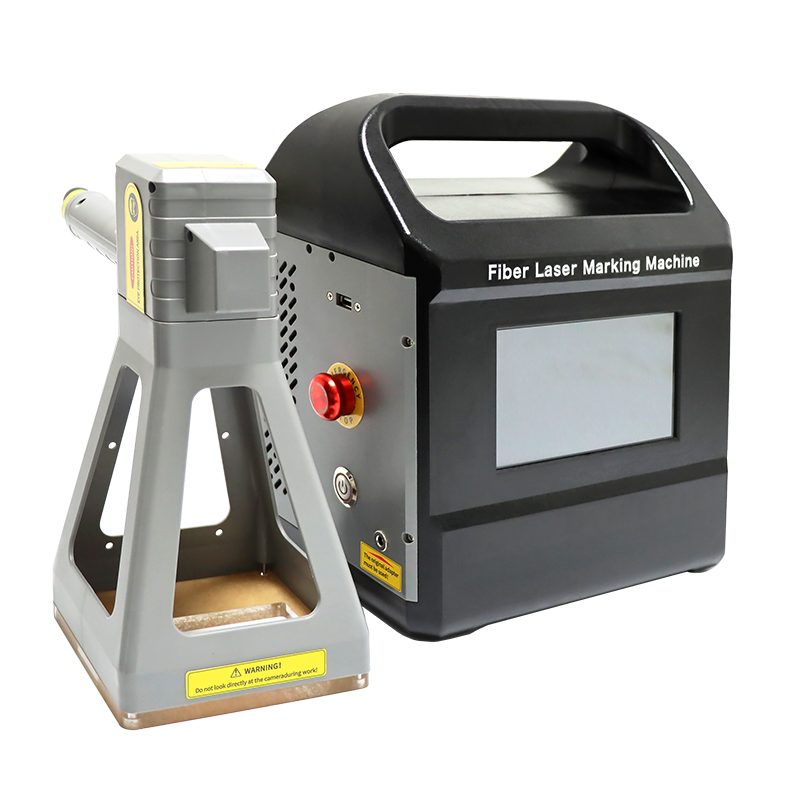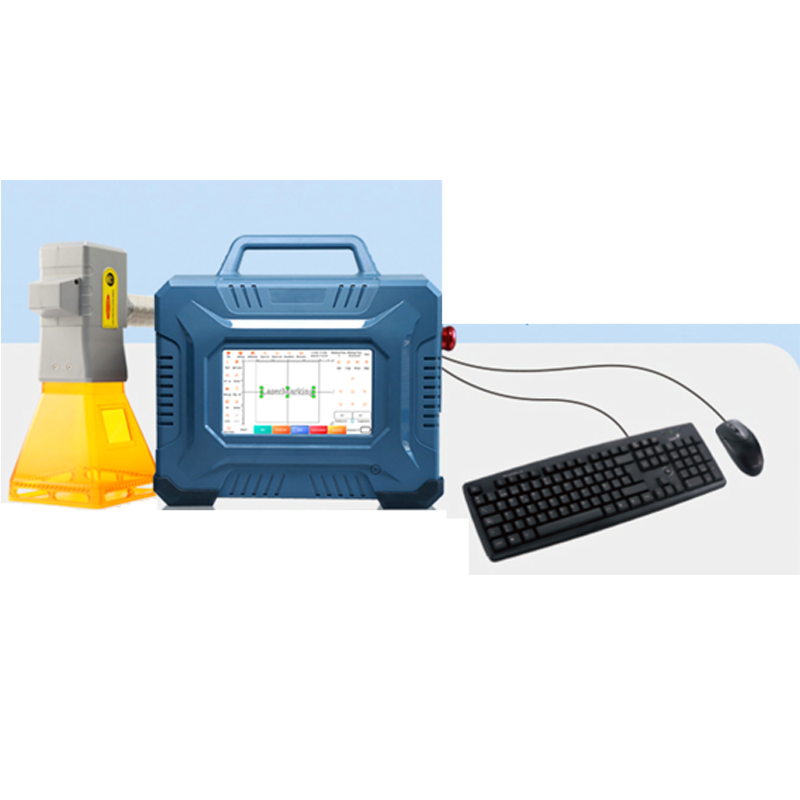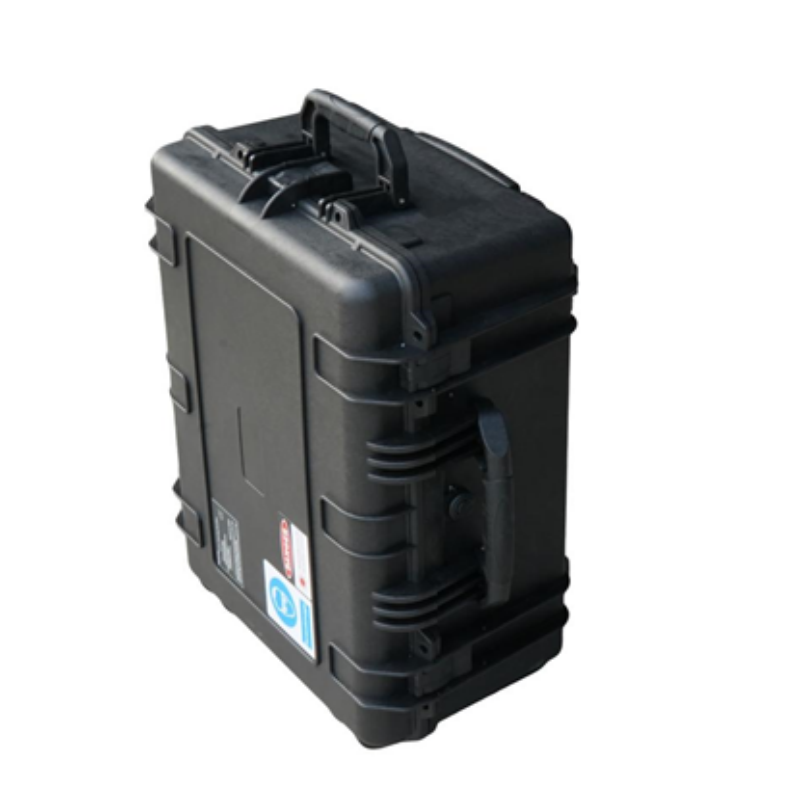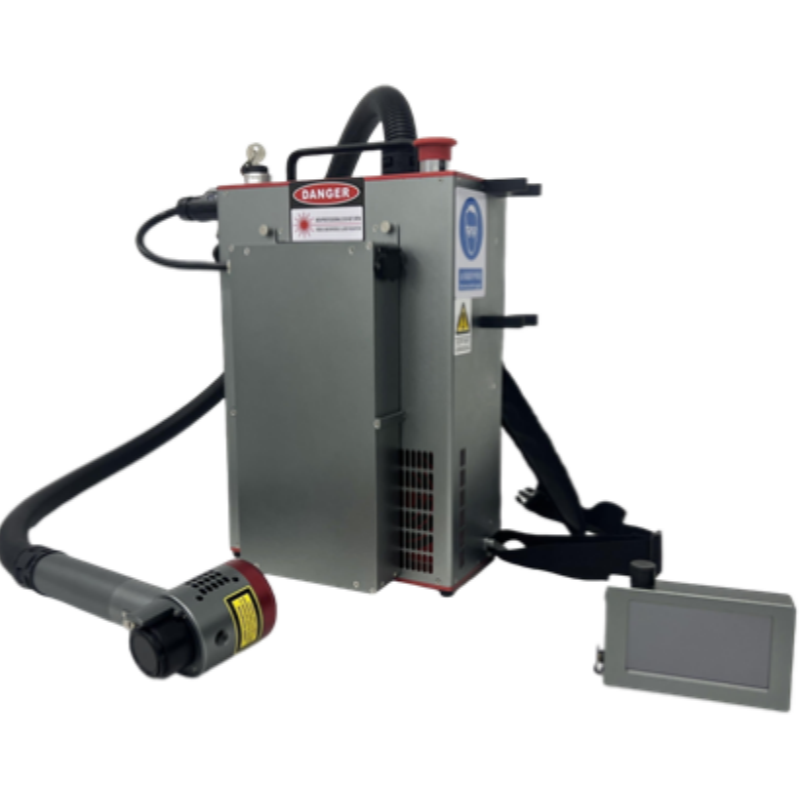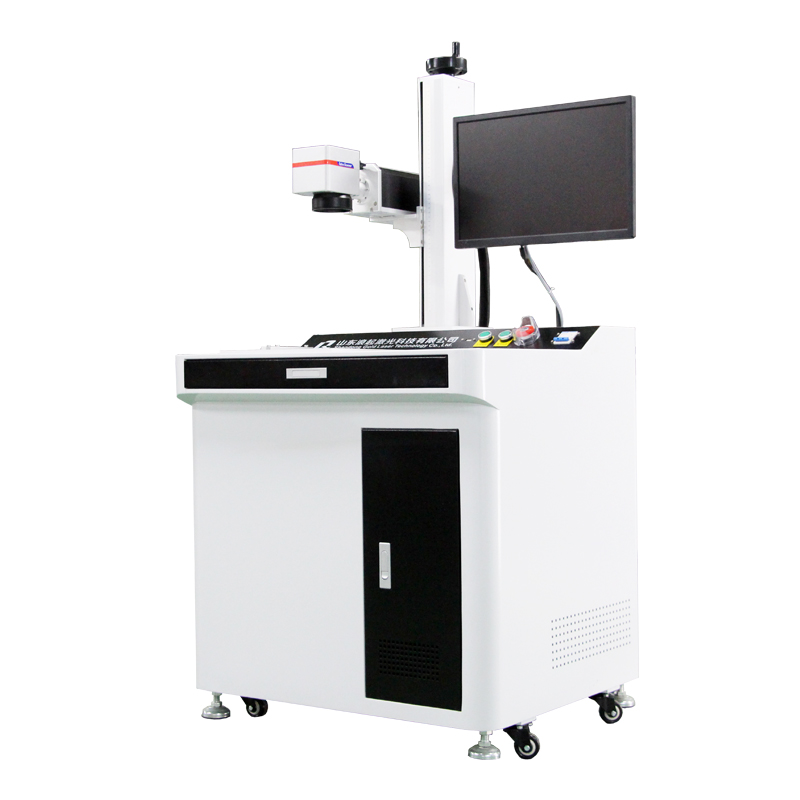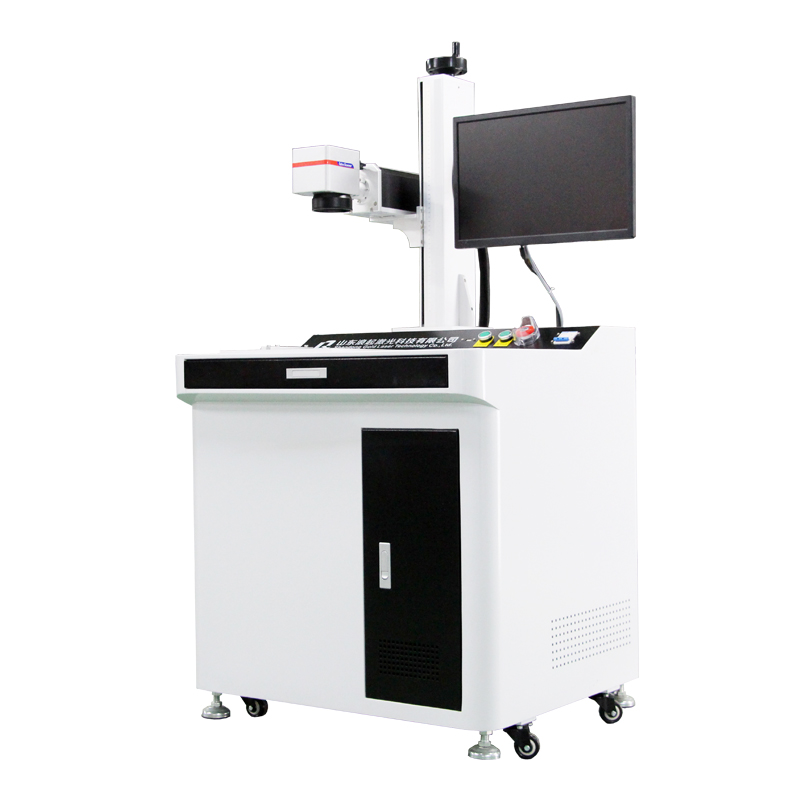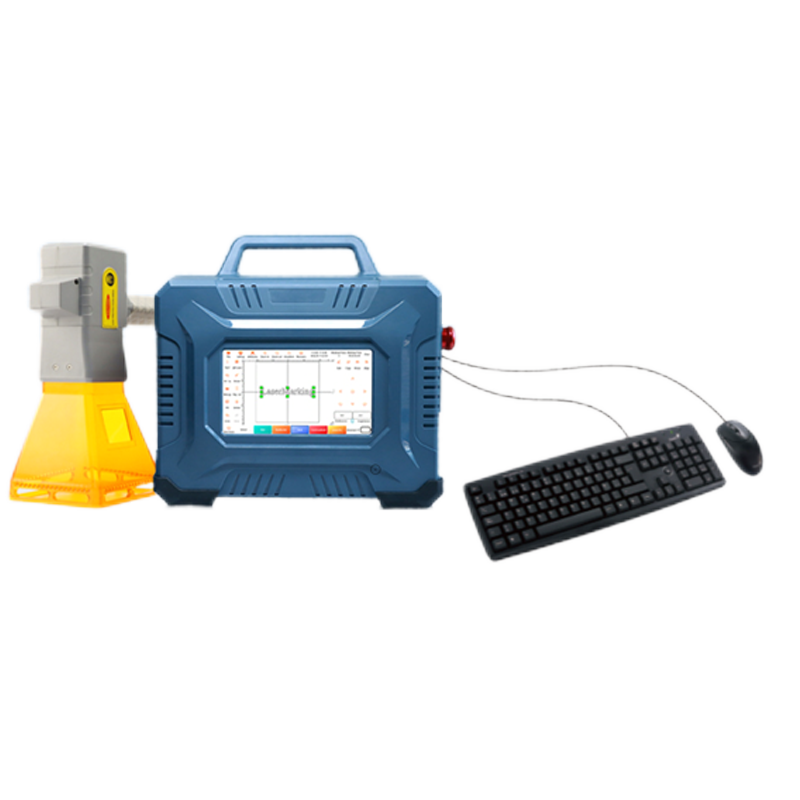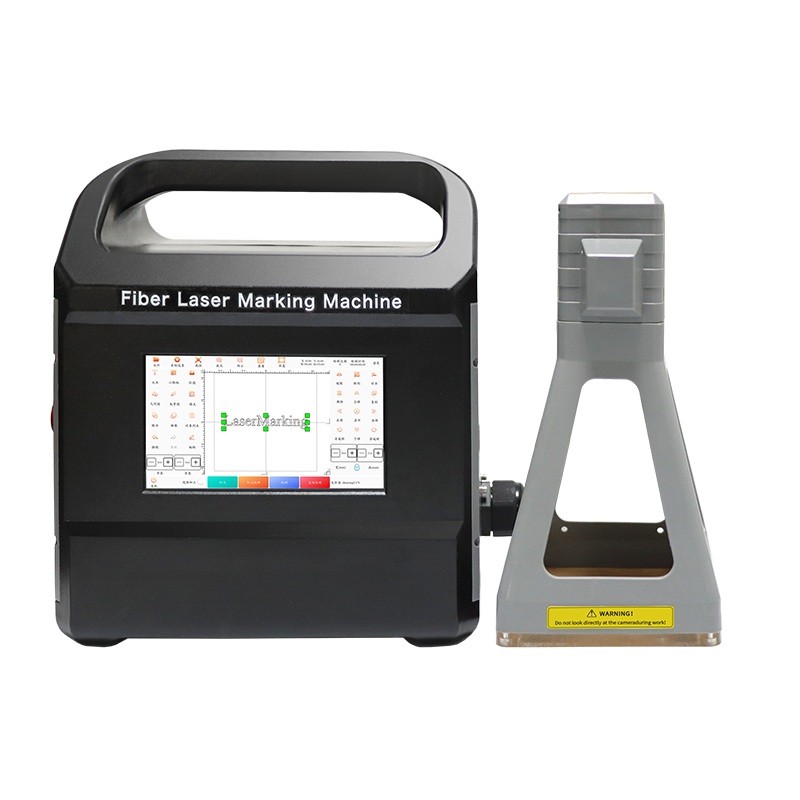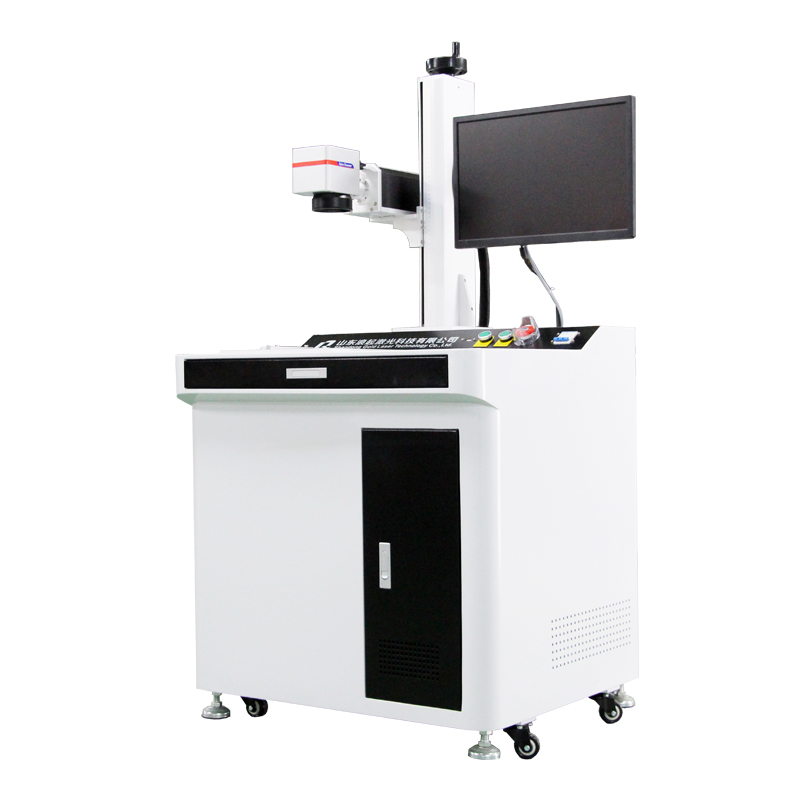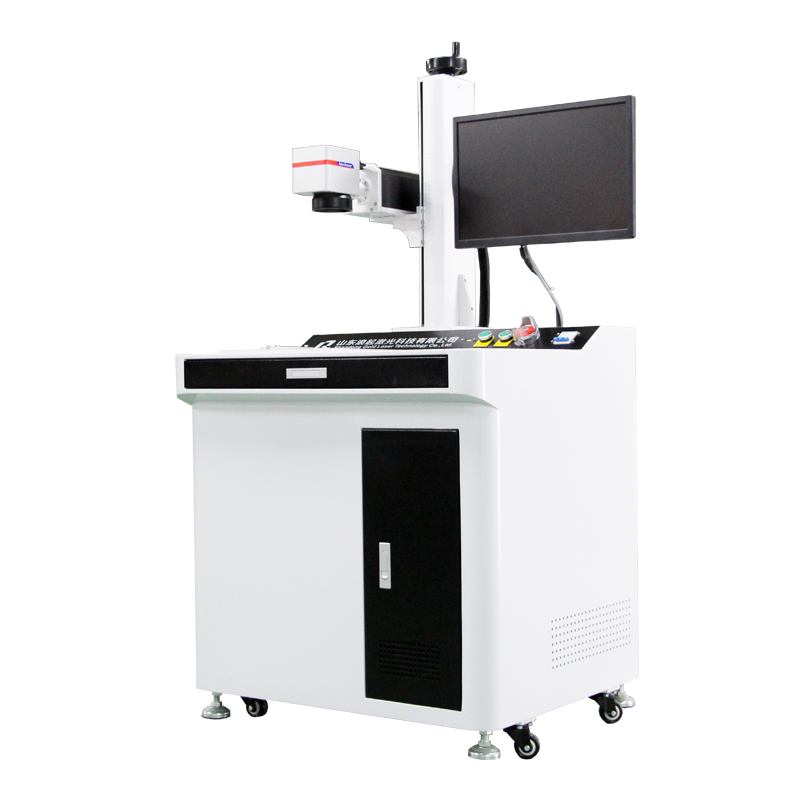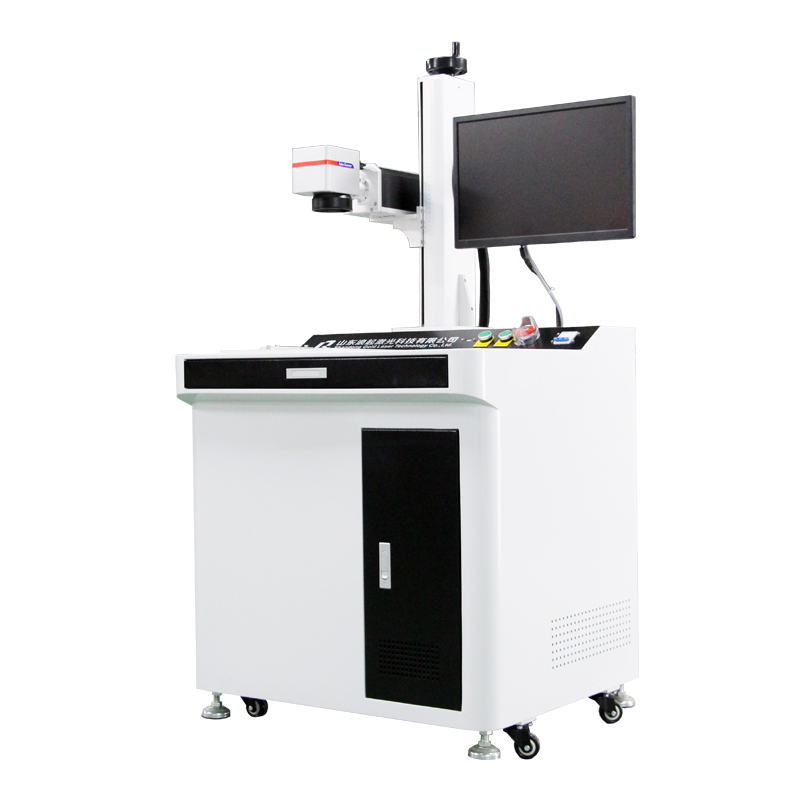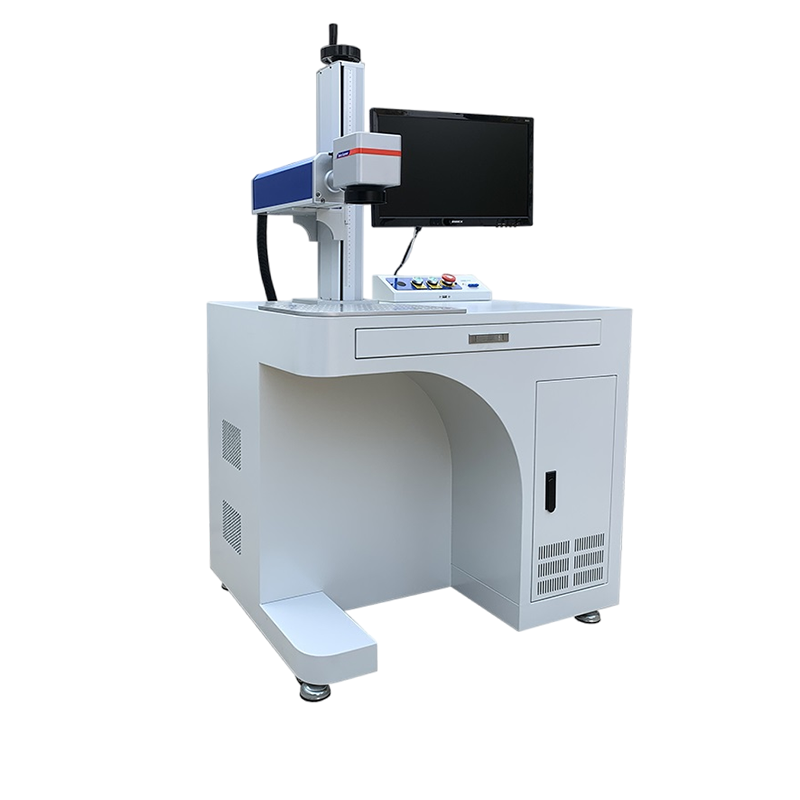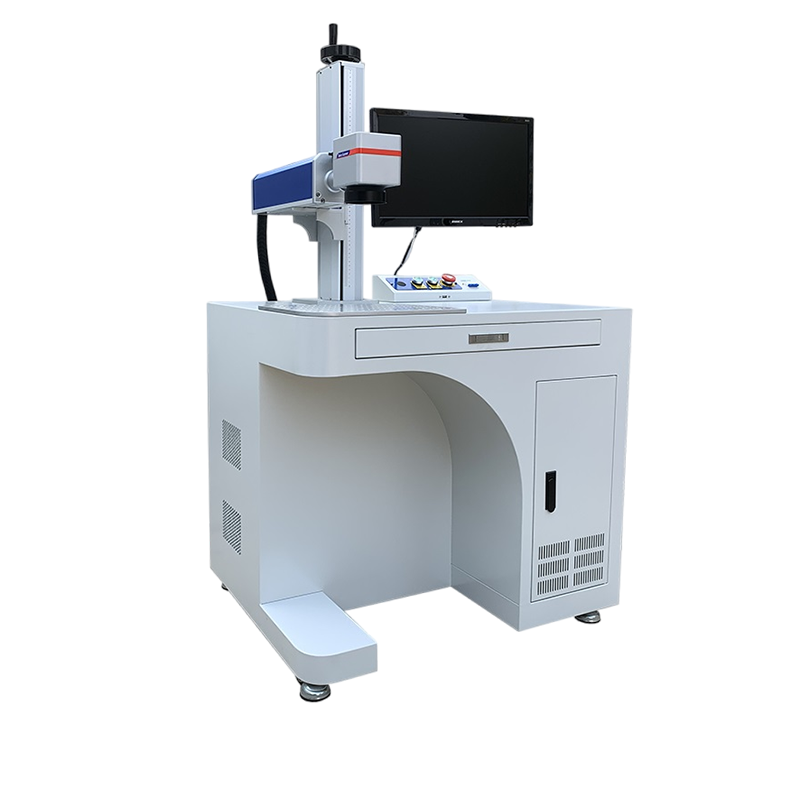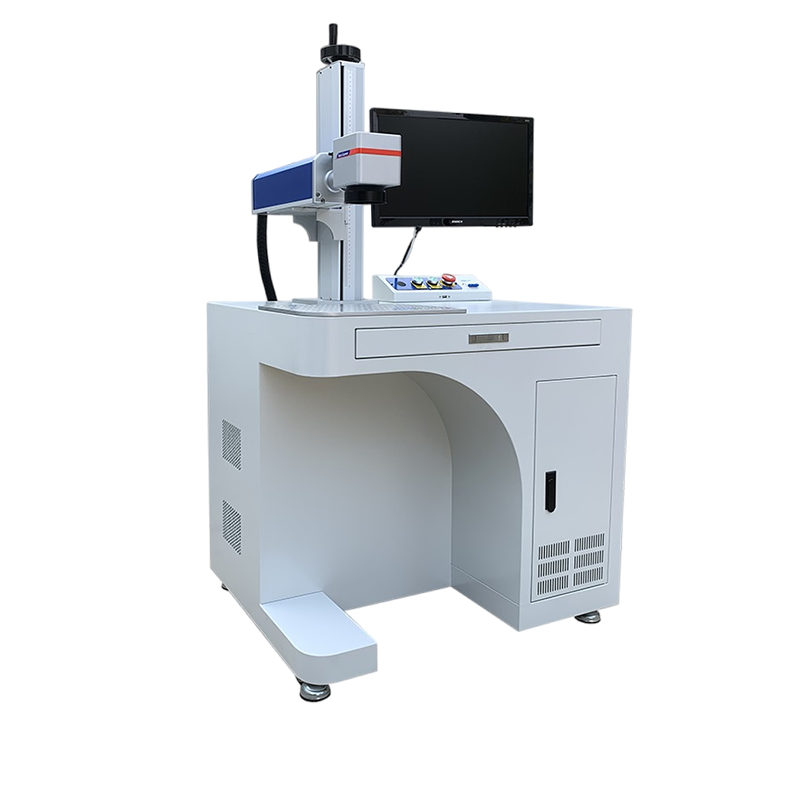What is a Portable Handheld Fiber Laser Marking Machine?
At its core, it's a laser marking system where the laser source and the control system are integrated into a compact, portable case. Instead of the part being moved under a fixed laser head (like in a gantry system), the user holds a lightweight handgun-like marker and moves it over the object to be marked.
Key Components:
Portable Main Unit: Contains the fiber laser source, control board, cooling system (usually air-cooled), and power supply.
Handheld Marking Head: A lightweight, ergonomic "gun" connected to the main unit by a cable. It contains the focusing lens and a red or green pilot light to show the marking area.
Software & Controller: Often includes a touchscreen on the main unit and/or connects to a computer for designing marks. It can store multiple pre-set patterns (logos, serial numbers, barcodes).
How Does It Work?
It uses a Fiber Laser, which is a solid-state laser where the gain medium is an optical fiber doped with rare-earth elements like Ytterbium. It produces a high-intensity beam with a wavelength of around 1064 nm.
This wavelength is perfectly absorbed by metals and most plastics, making it ideal for permanent marking through a process called annealing, engraving, or foaming (for plastics), without necessarily removing material.
Key Advantages (Why It's So Popular)
Extreme Portability & Flexibility: This is the biggest advantage. You can take the laser to the product. Mark large, heavy, or fixed objects like machinery, structural beams, or molds that cannot fit into a traditional machine.
Ease of Use: Very little training is required. Operators simply position the handheld head and press a button.
Permanent, High-Quality Marks: Creates rust-proof, heat-proof, and tamper-proof marks. Ideal for traceability (QR codes, Data Matrix codes, serial numbers).
High Speed & Efficiency: Marks are made in seconds.
Low Operating Cost: Fiber lasers are highly efficient, are air-cooled, and have a long lifespan (typically 100,000 hours).
Non-Contact Process: The laser head doesn't touch the surface, eliminating tool wear and mechanical stress on the object.
Common Applications
This machine is used across countless industries for permanent identification and customization:
Metalworking & Tools: Marking logos, part numbers, and serial numbers on tools, machinery, and automotive parts.
Aerospace & Defense: Traceability marks on critical components.
Medical Devices: UDI (Unique Device Identification) codes on surgical instruments and implants.
Electronics: Marking PCBs, connectors, and components with logos and codes.
DIY & Personalization: Customizing items like knives, lighters, pens, jewelry, and phone cases.
Construction: Marking pipes, valves, and structural steel with IDs and specifications.
Technical Specifications to Consider When Buying
| Feature | What to Look For | Typical Range |
|---|---|---|
| Laser Power | Determines marking speed and depth. | 20W, 30W, 50W, 100W (20W-30W is common for handheld) |
| Laser Wavelength | Determines what materials it can mark. | 1064 nm (standard for metals) |
| Marking Area | The size of the box you can mark in one pass. | e.g., 100x100mm, 200x200mm, 300x300mm |
| Cooling Method | Affects portability and noise. | Air-cooled (for portability) |
| Software | Ease of designing marks (text, barcodes, logos). | Brand-specific (often simple and intuitive) |
| Weight | Impacts user fatigue. | Handheld head: 0.5 - 1.5 kg; Main unit: 10 - 20 kg |
| Supported File Types | For importing graphics. | .PLT, .DXF, .AI, .BMP, etc. |
| Power Requirements | For use in different environments. | AC 110V/220V |
Limitations and Considerations
Requires Steady Hands: The mark quality can be affected by inconsistent hand movement, though software can sometimes compensate for minor variations in speed.
Not for All Materials: While great for metals and many plastics, it cannot mark materials like wood, glass, or transparent plastics effectively. A CO2 laser is better for those.
Safety: It is a Class 4 Laser Product. Laser safety glasses for the specific wavelength are MANDATORY to protect the operator's eyes from permanent damage.
Fume Extraction: Marking can produce fumes, especially on plastics or coated metals. Use in a well-ventilated area or with a fume extractor.
Depth of Mark: It is primarily for surface marking/engraving. It is not a deep engraving or cutting tool like a fiber laser cutter.
Popular Brands and Price Range
Entry-Level/Chinese Brands: You'll find many on platforms like Alibaba or from direct manufacturers. They are cost-effective but support and quality can vary. (e.g., ~$2,500 - $5,000 USD)
Established Industrial Brands: Companies like Trumpf, IPG Photonics, and Han's Laser offer high-reliability systems with strong technical support, but at a higher price point. (e.g., ~$8,000 - $20,000+ USD)

